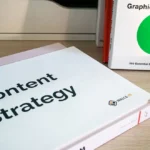Right, so I managed to grab Courtney for a quick chat the other day about something I’ve been itching to explore: how AI is revolutionising abandoned cart recovery, and more broadly, the whole ‘personalisation-via-email’ game. Forget those generic ‘Did you forget something?’ emails. We’re talking serious next-level stuff.
“The old way just doesn’t cut it anymore,” Courtney said, leaning back in her chair. “People are bombarded with emails. If you’re not offering them something genuinely relevant, you’re just noise.”
And that’s where AI comes in. Instead of simply sending a blanket reminder, AI can analyse why someone abandoned their cart. Was it the shipping costs? Did they get distracted and start price comparing? Were they confused about the checkout process?
Digging into the ‘Why’: AI Analysis
Here’s how it typically works. The AI engine integrates with your e-commerce platform and tracks user behaviour. Think about things like the time spent on the checkout page, any changes in the shopping cart items, what websites the user previously visited. It cross-references this data with typical ‘abandonment’ triggers. For example, a sudden spike in shipping cost searches after adding items to the cart would suggest that shipping was a major factor.
Hyper-Personalised Solutions in Action
Once you understand the ‘why’, you can craft hyper-relevant solutions. “Imagine,” Courtney explained, “someone abandons their cart after seeing the shipping costs. Instead of a generic reminder, they get an email saying, ‘Hey, we noticed shipping might have been a concern. Here’s free shipping on your order!’ Or, if they were clearly price comparing, you could include a comparison chart highlighting your product’s superior features or value compared to competitors.”
Another example is suggesting related products. If someone added a camera to their cart but didn’t purchase it, the AI might suggest a compatible lens or camera bag in the abandoned cart recovery email. “It’s not just about getting them to buy the original item,” Courtney said. “It’s about showing them you understand their needs and offering them relevant solutions.”
Contextual Product Recommendations & Upselling: The Bigger Picture
Beyond abandoned carts, the same AI-powered personalisation can be applied across all your email marketing. We started digging into the realm of Contextual Product Recommendations & Upselling. This isn’t just about throwing random ‘you might like’ items into an email; it’s about understanding the user’s current context and tailoring recommendations accordingly.
“Think about recent purchases,” Courtney suggested. “If someone bought a hiking jacket, you could recommend hiking boots or a waterproof backpack in a follow-up email. Or consider their browsing history – if they’ve been looking at coffee makers, send them emails about different types of coffee beans or milk frothers.”
Beyond Purchase History: External Factors
But it doesn’t stop there. The AI can even factor in external events. “Imagine a sudden cold snap,” Courtney said, her eyes lighting up. “You could send an email to people in affected areas promoting warm clothing or blankets. Or if a trending news story relates to one of your products, you could leverage that in your email marketing.”
Timing and Placement: Optimising for Impact
Finally, the AI optimises the timing and placement of these recommendations within the email. “It’s not just about what you recommend, but when and where you recommend it,” Courtney emphasised. “The AI can analyse when users are most likely to engage with emails and adjust the sending time accordingly. It can also test different placements of product recommendations within the email to see what drives the most clicks and conversions.”
For example, placing a personalised product recommendation near the top of an email might be more effective for users who are known to be impulsive buyers, while placing it near the bottom might work better for users who prefer to read through the email content first. The AI learns from these experiments and continuously adjusts its strategy to maximise impact.
Essentially, by understanding the specific reasons behind cart abandonment and the broader context of each user’s behaviour, we can create email experiences that are genuinely helpful and persuasive. It transforms email marketing from a scattergun approach to a laser-focused conversation.











